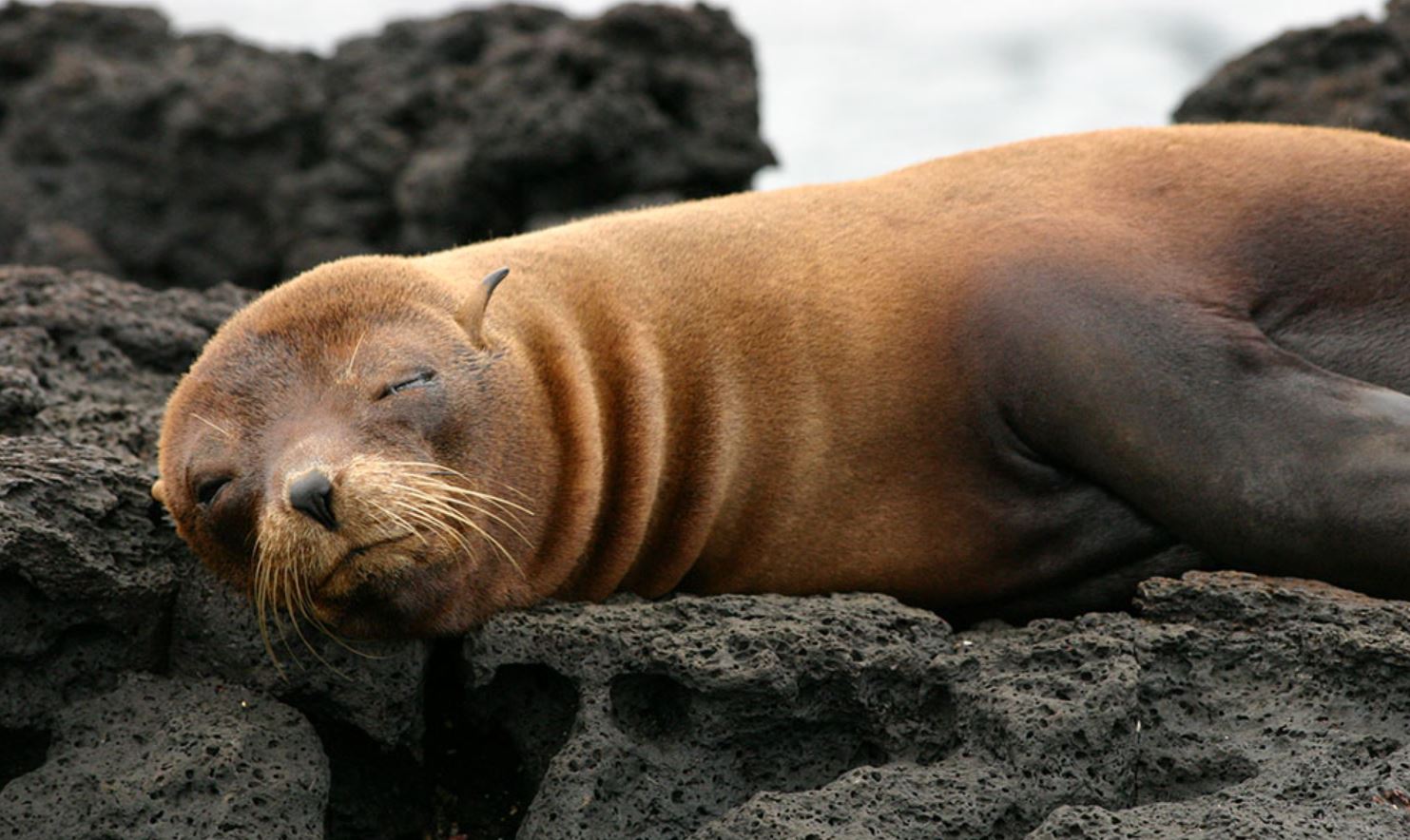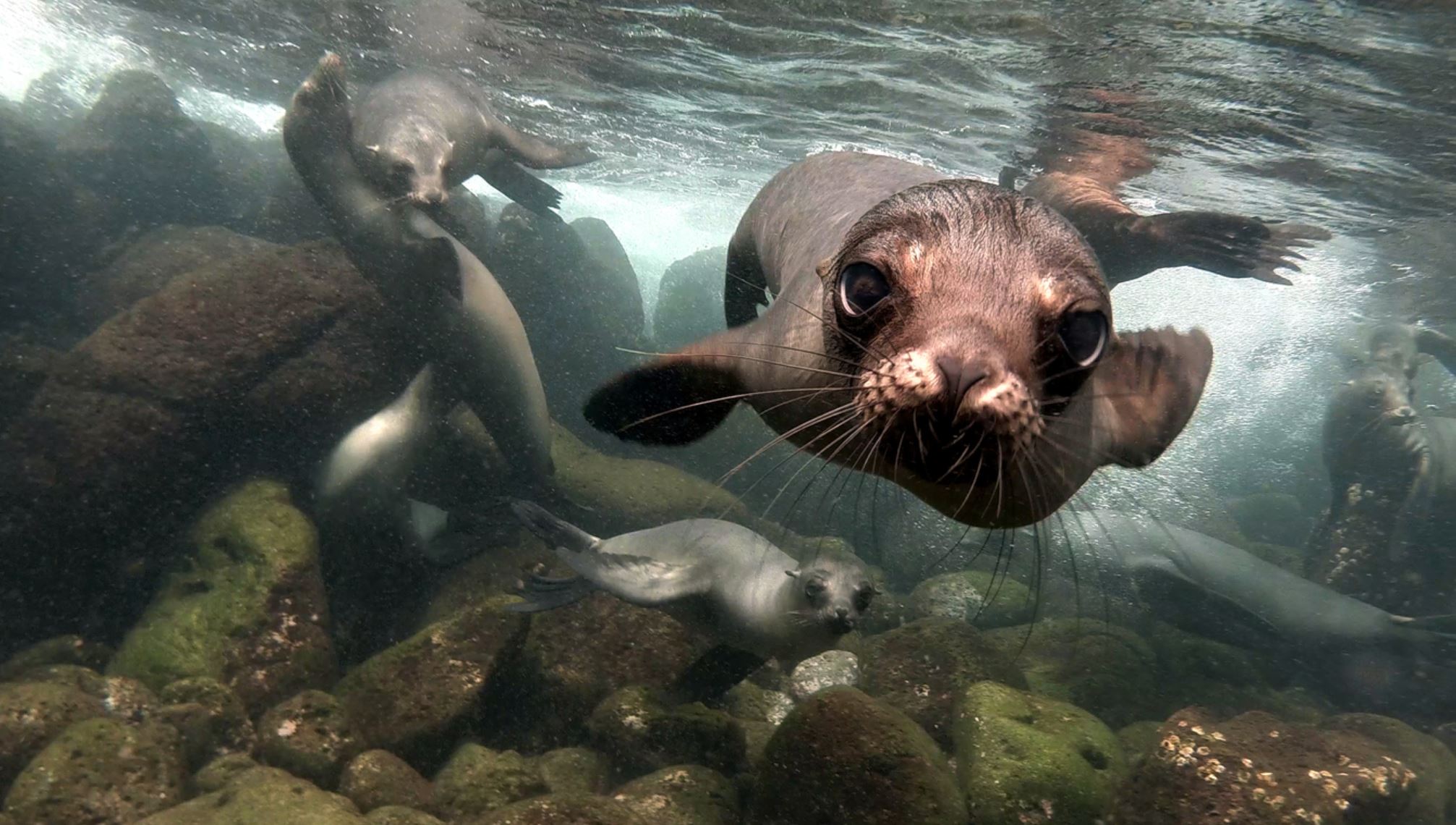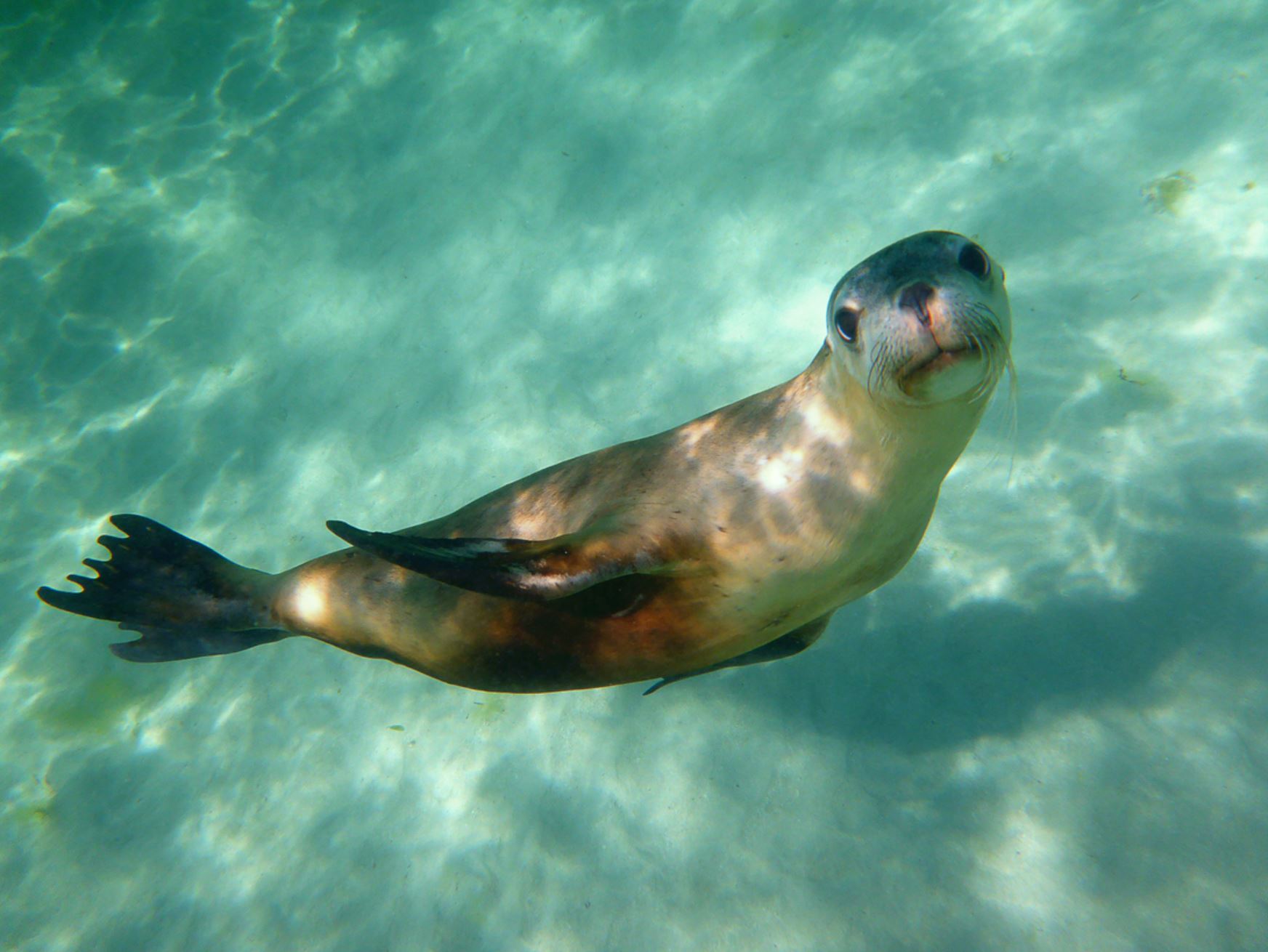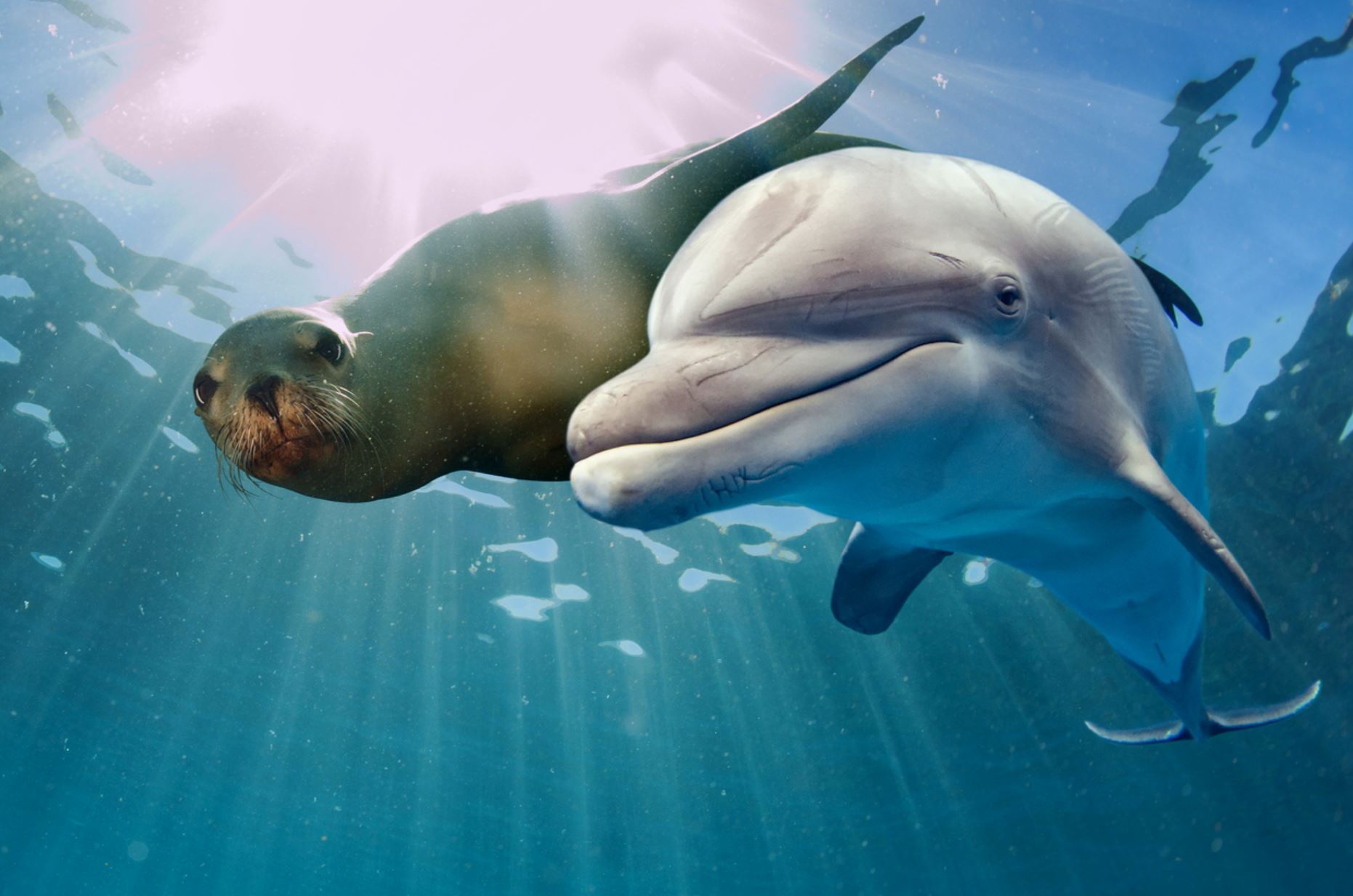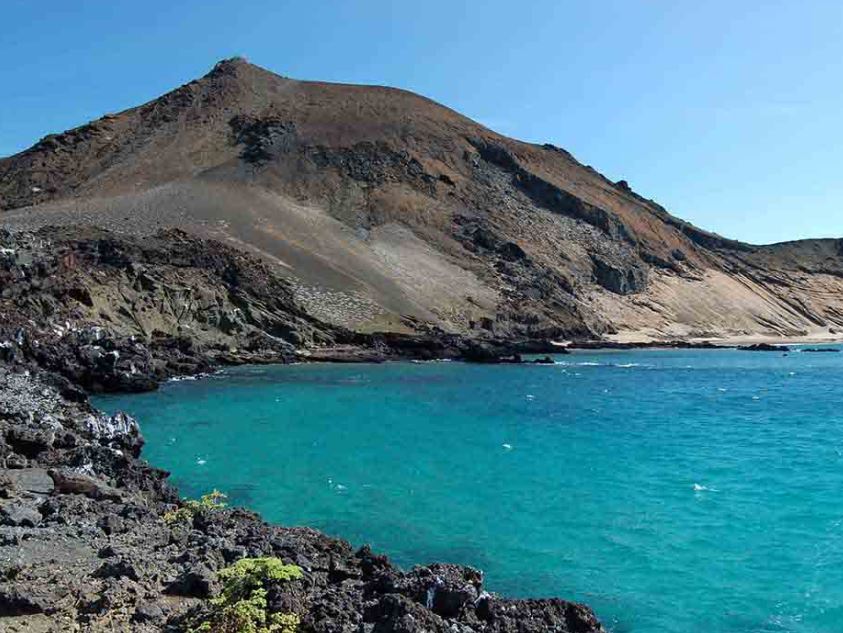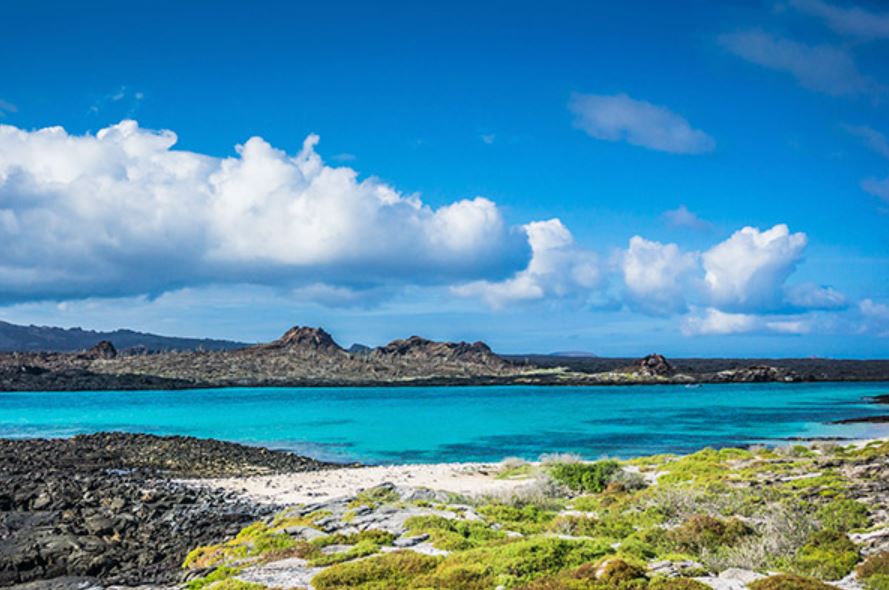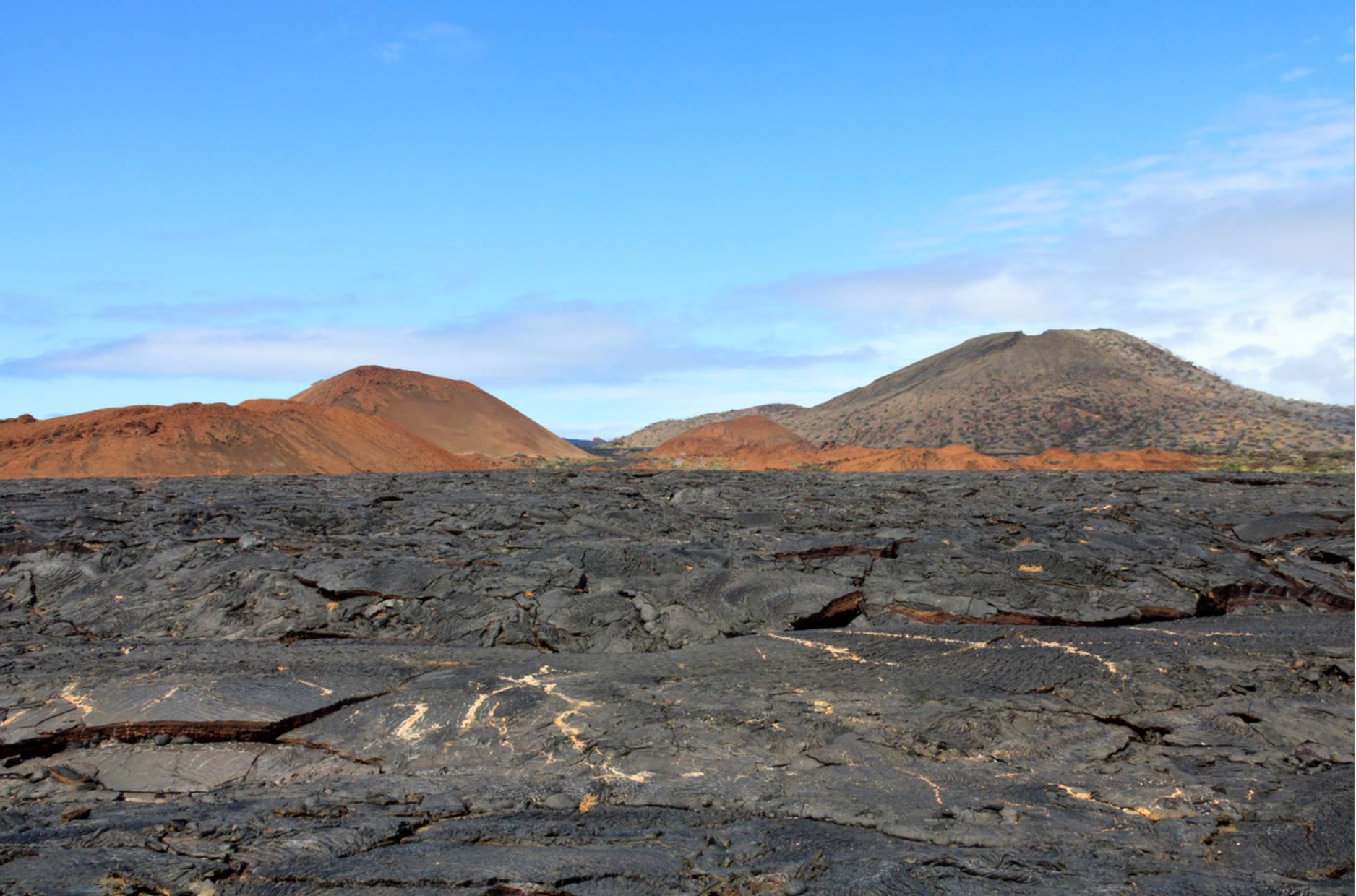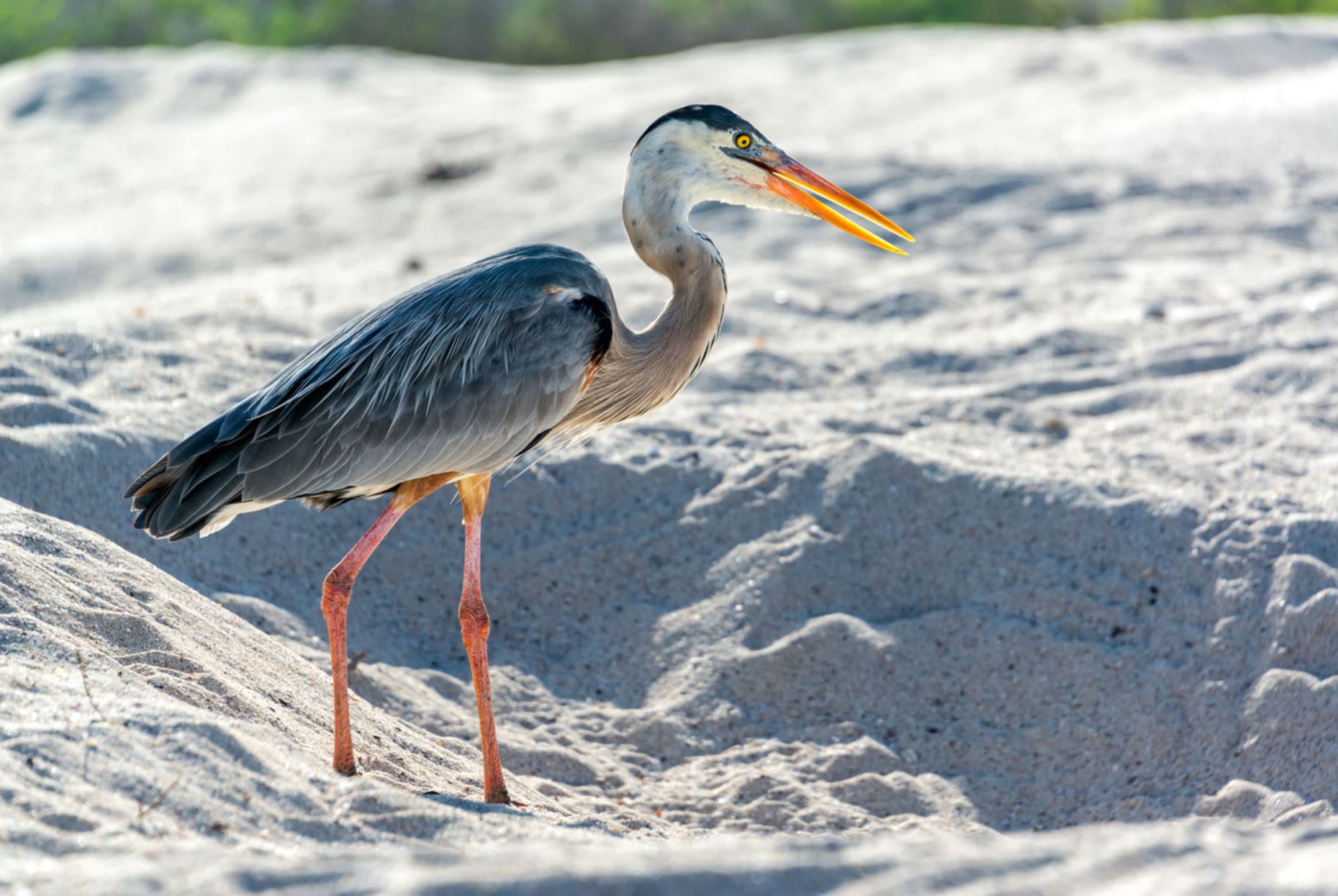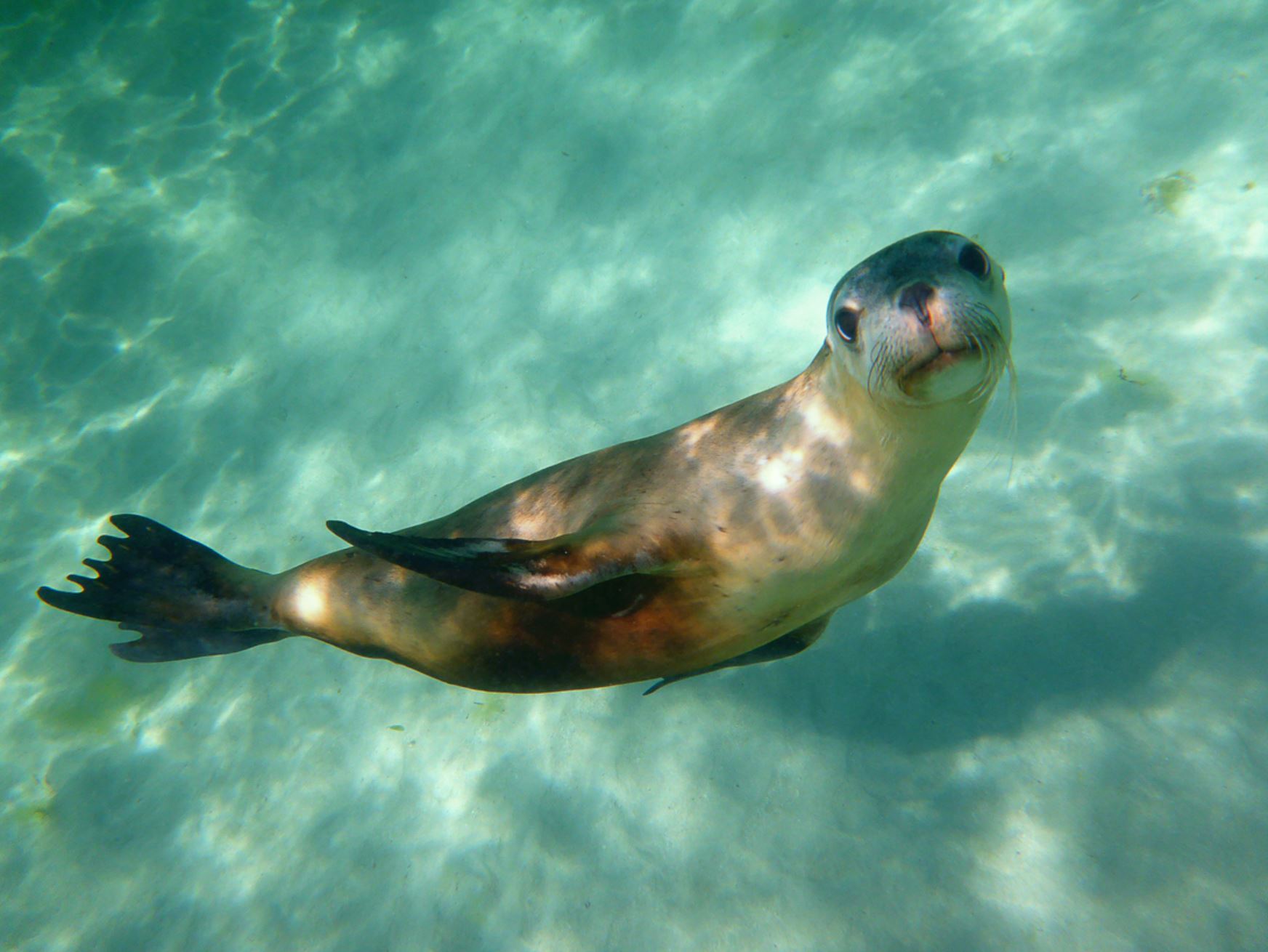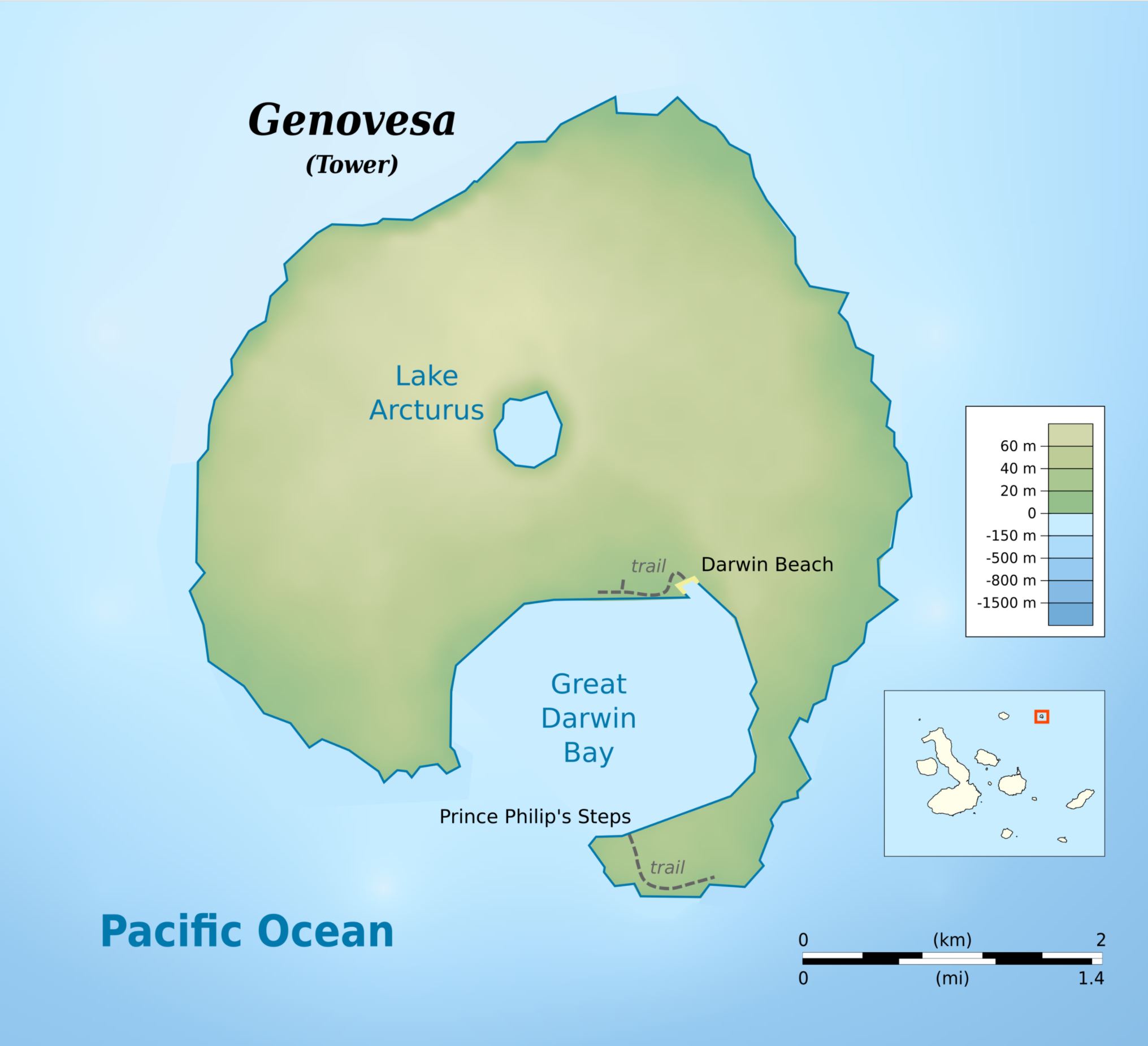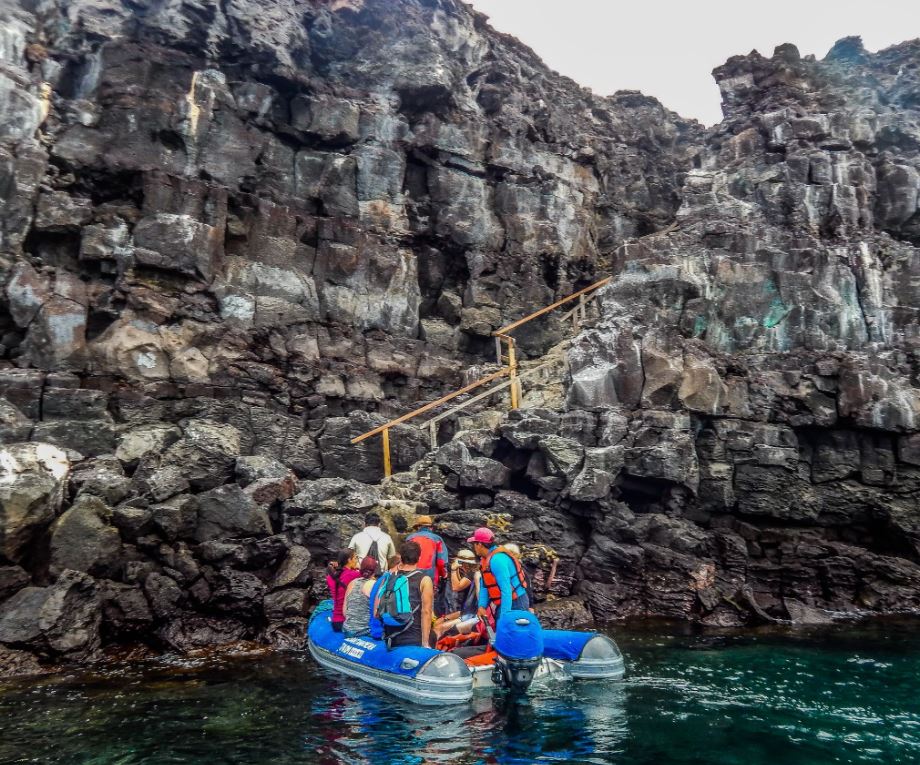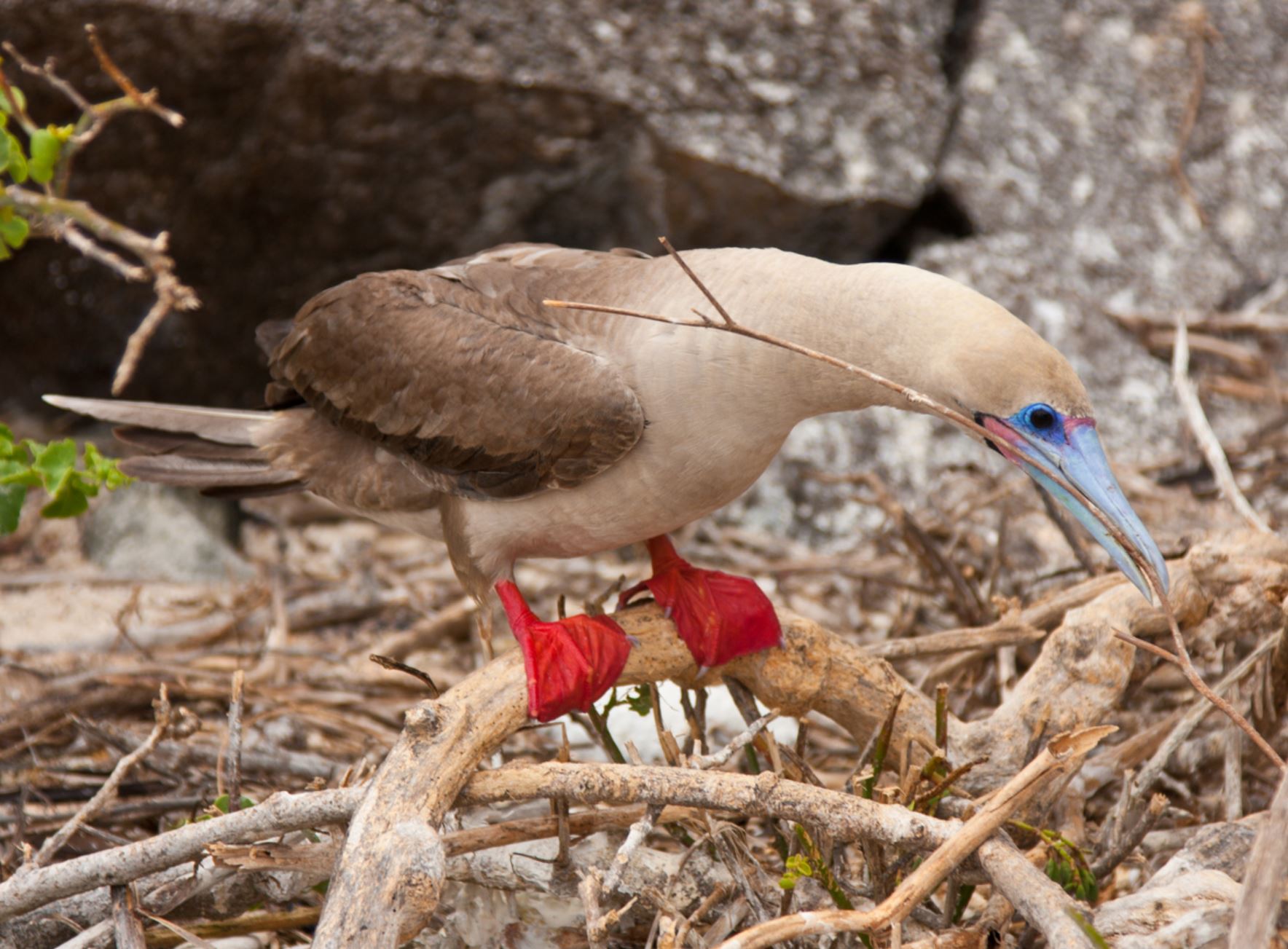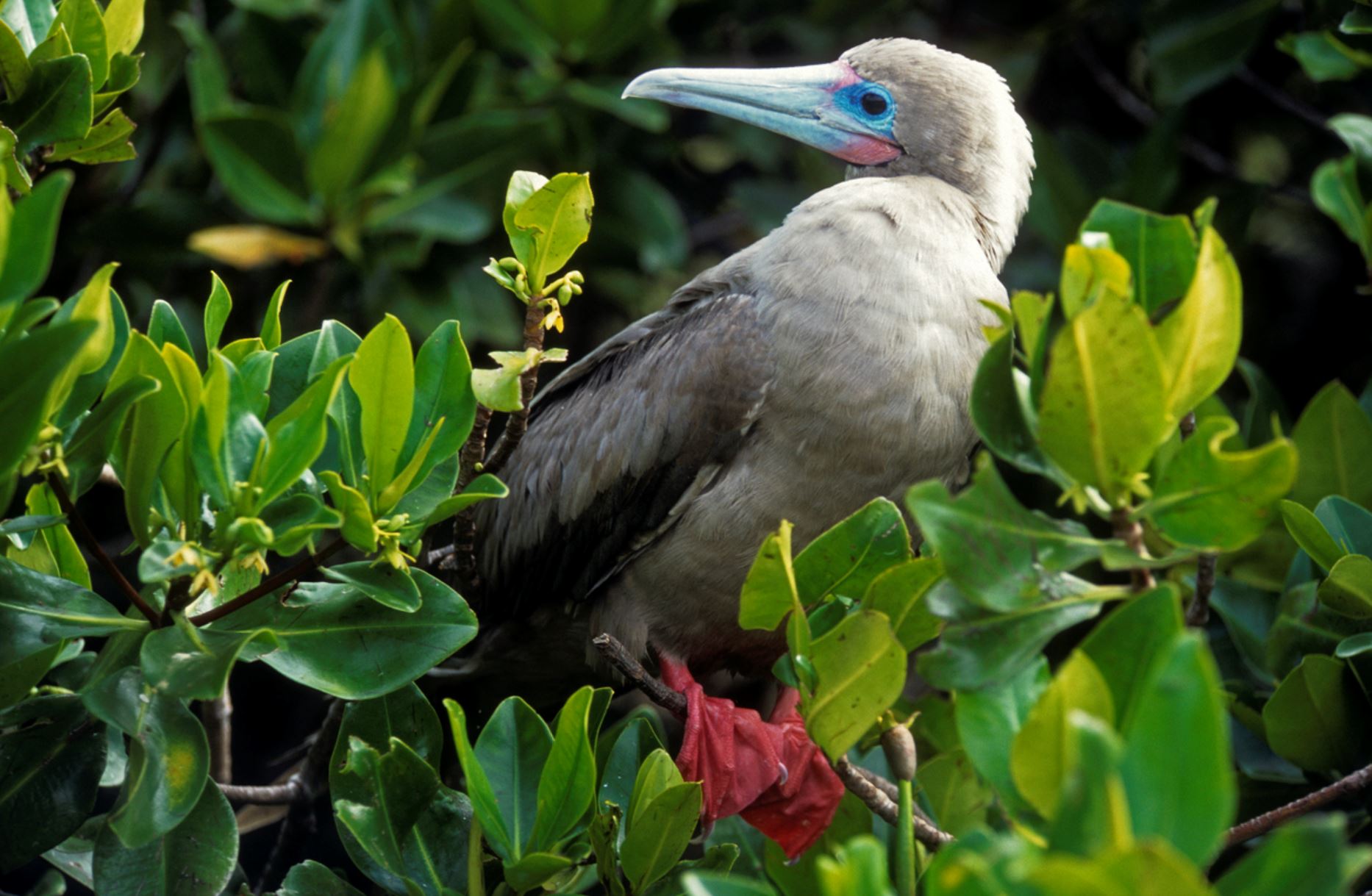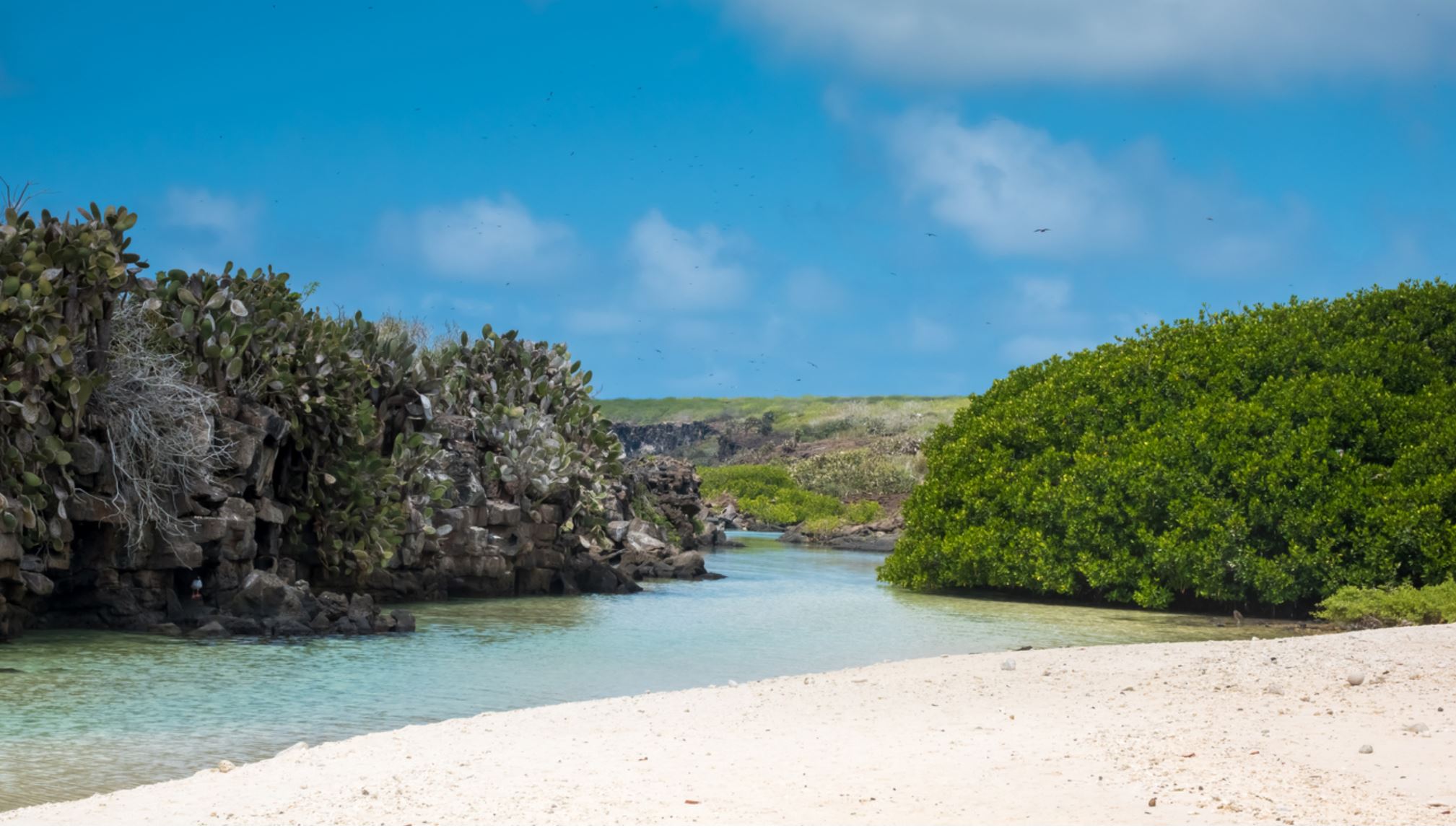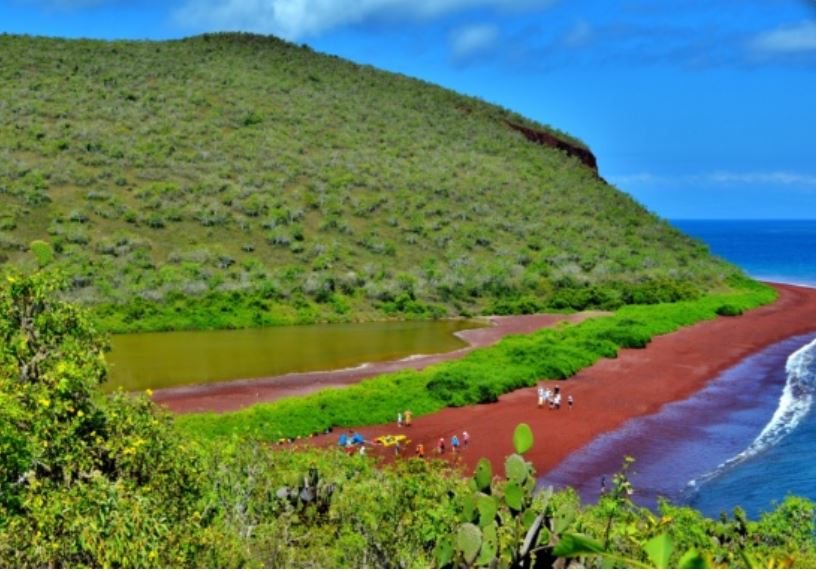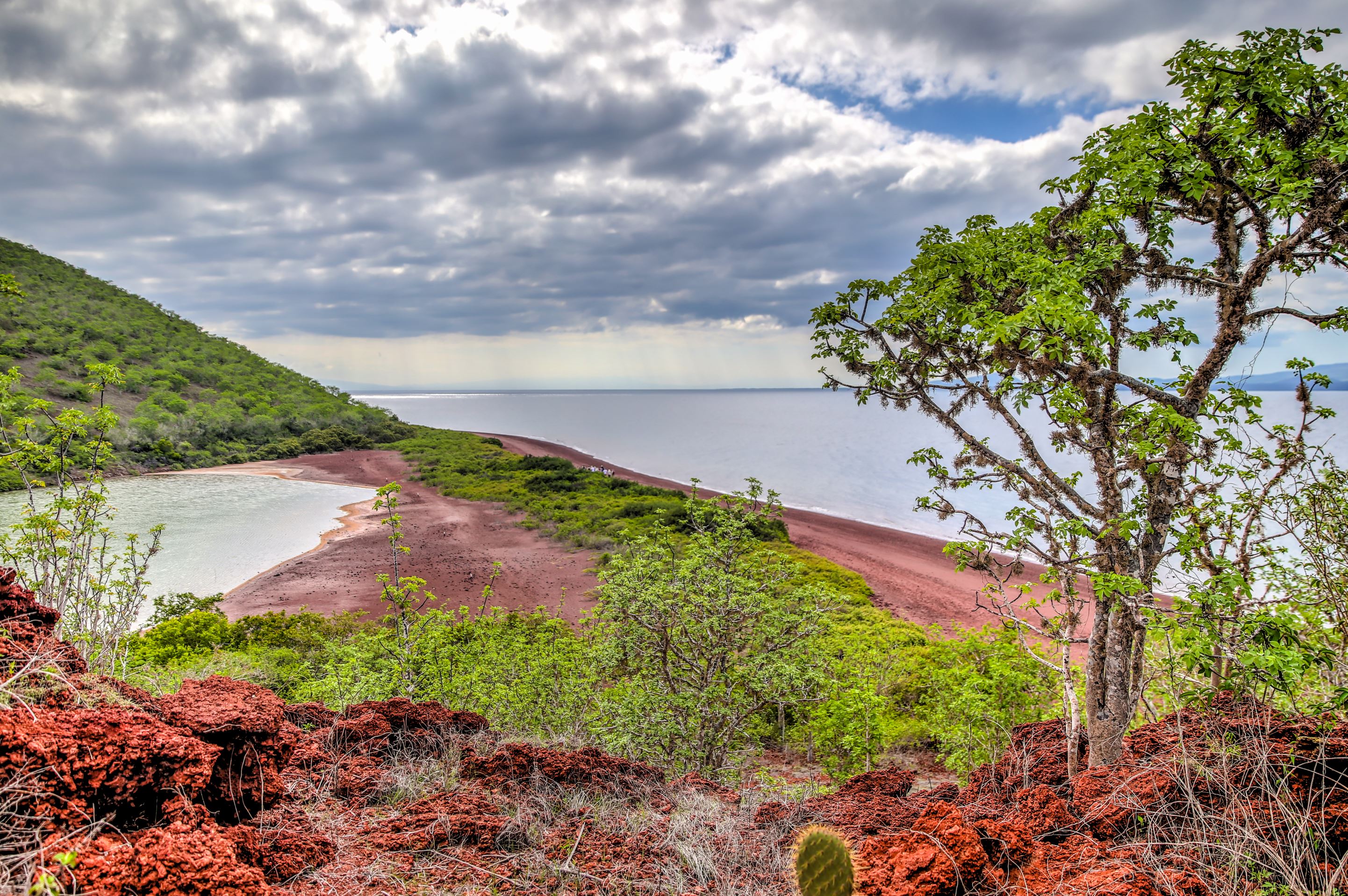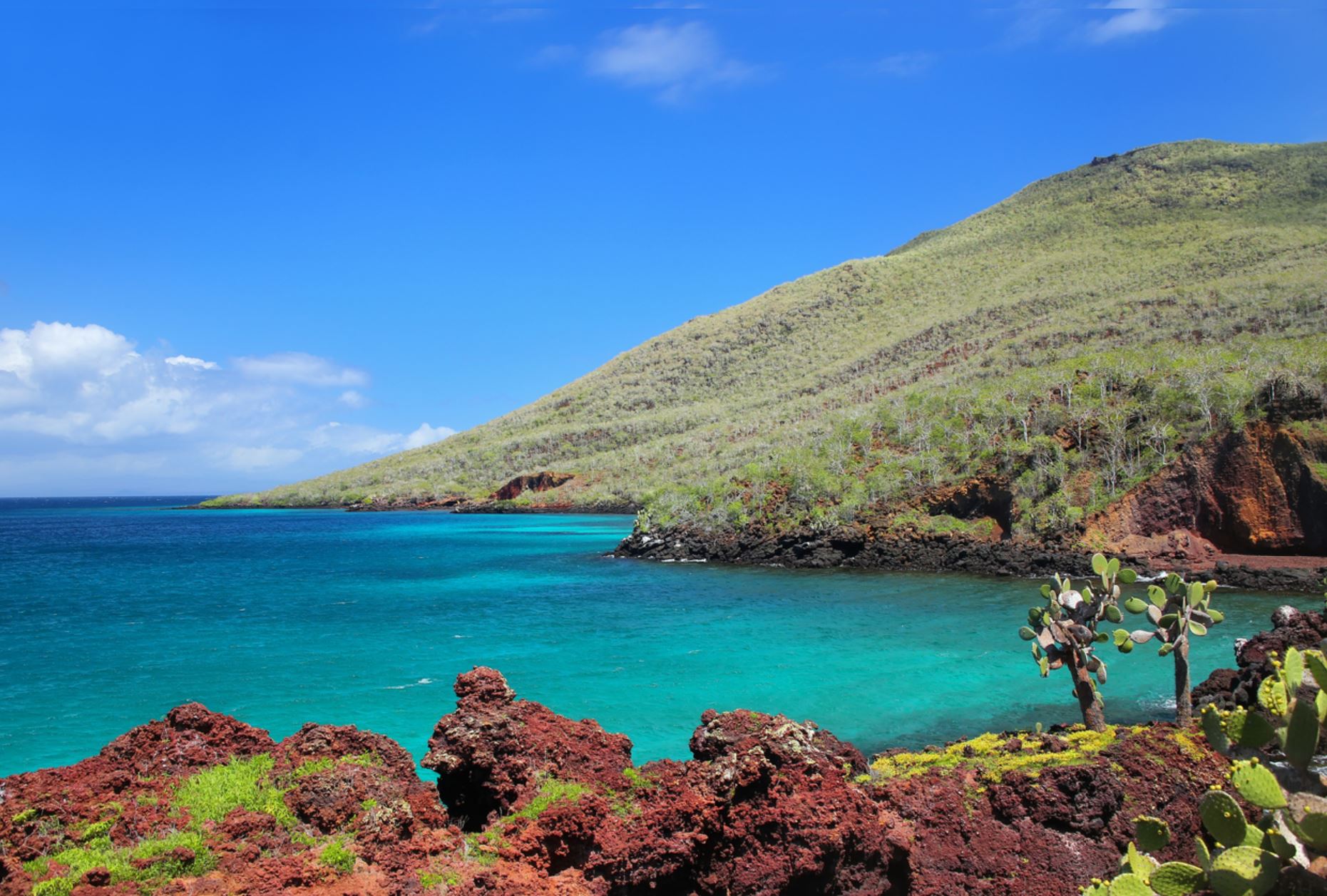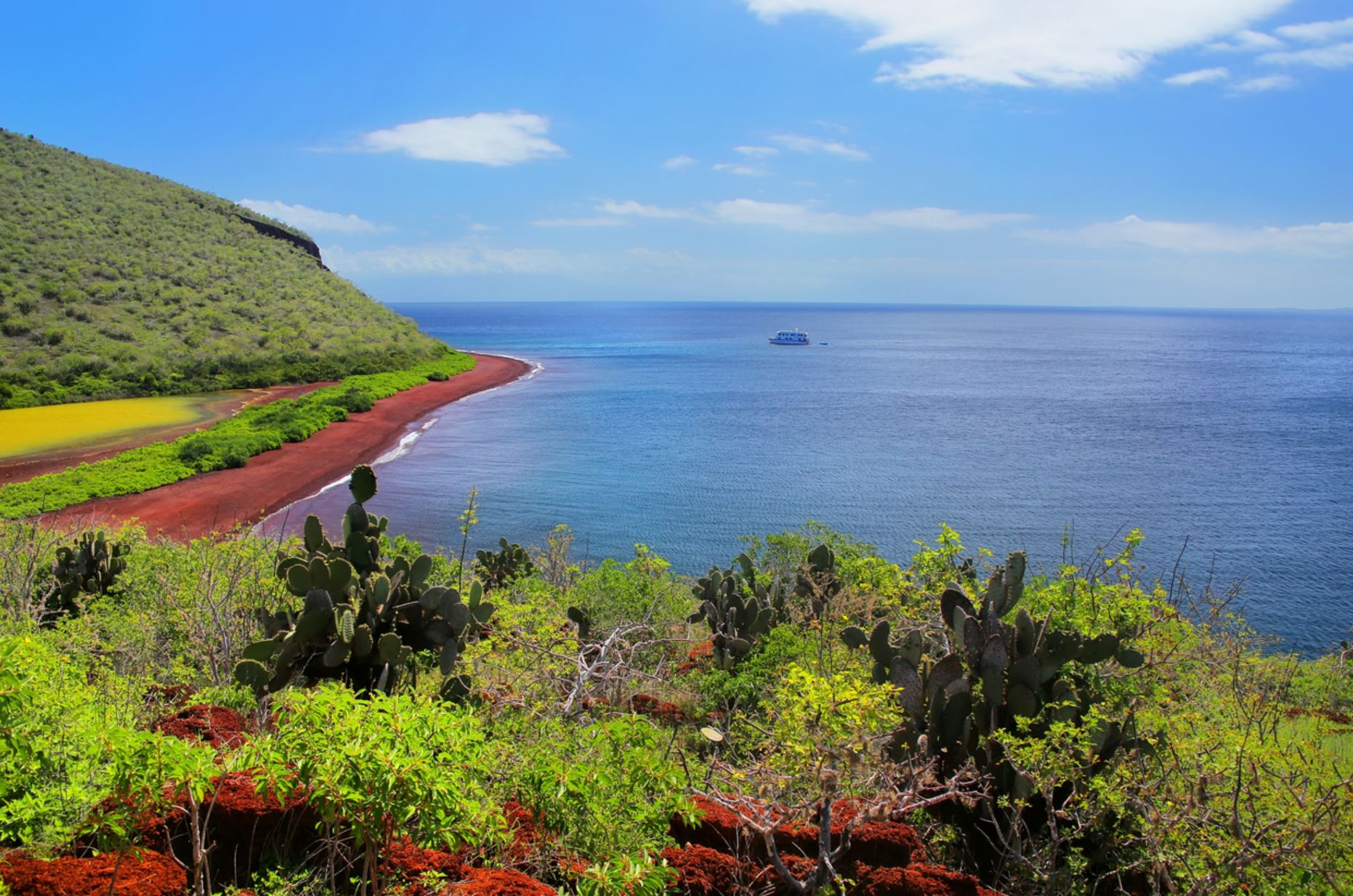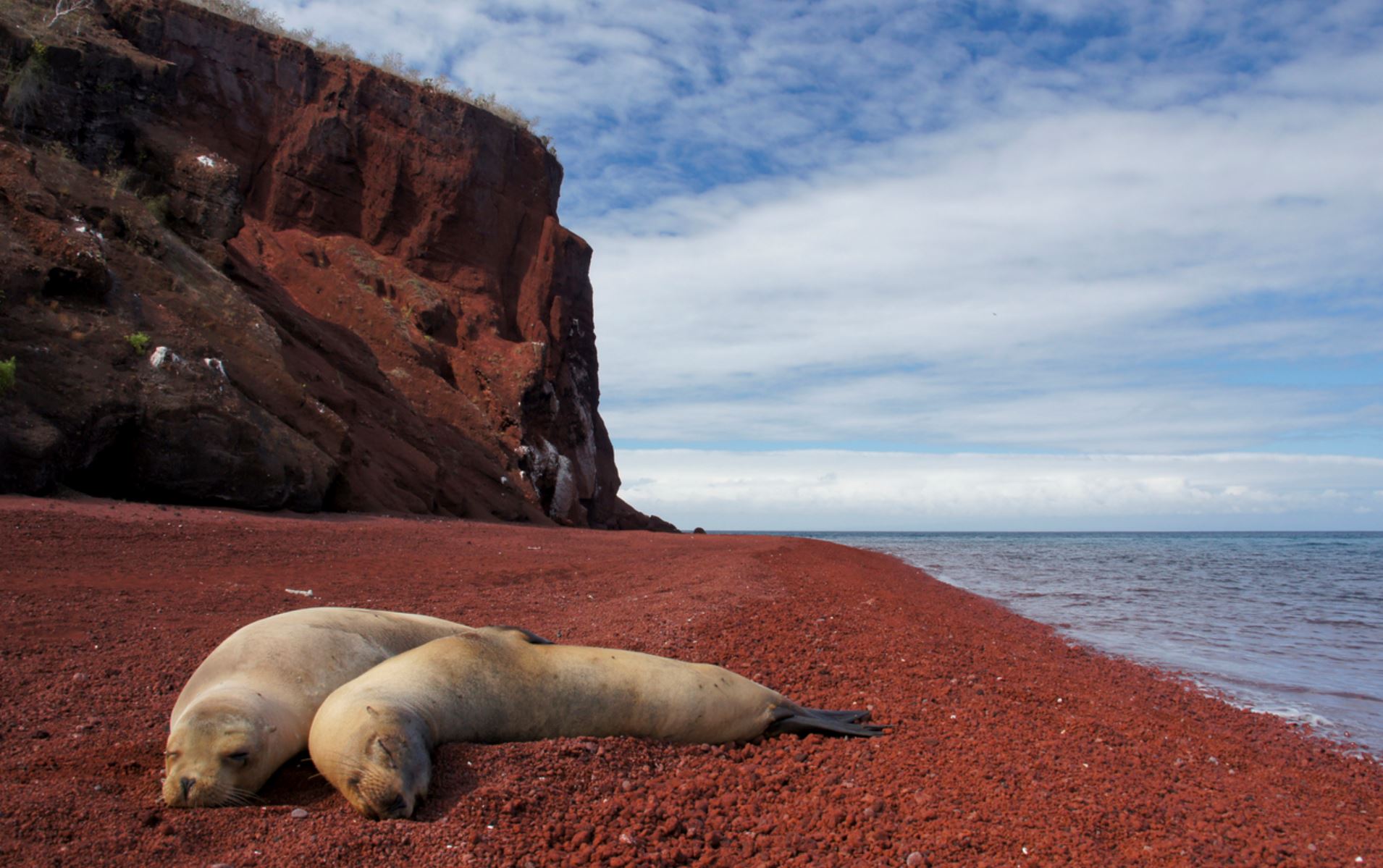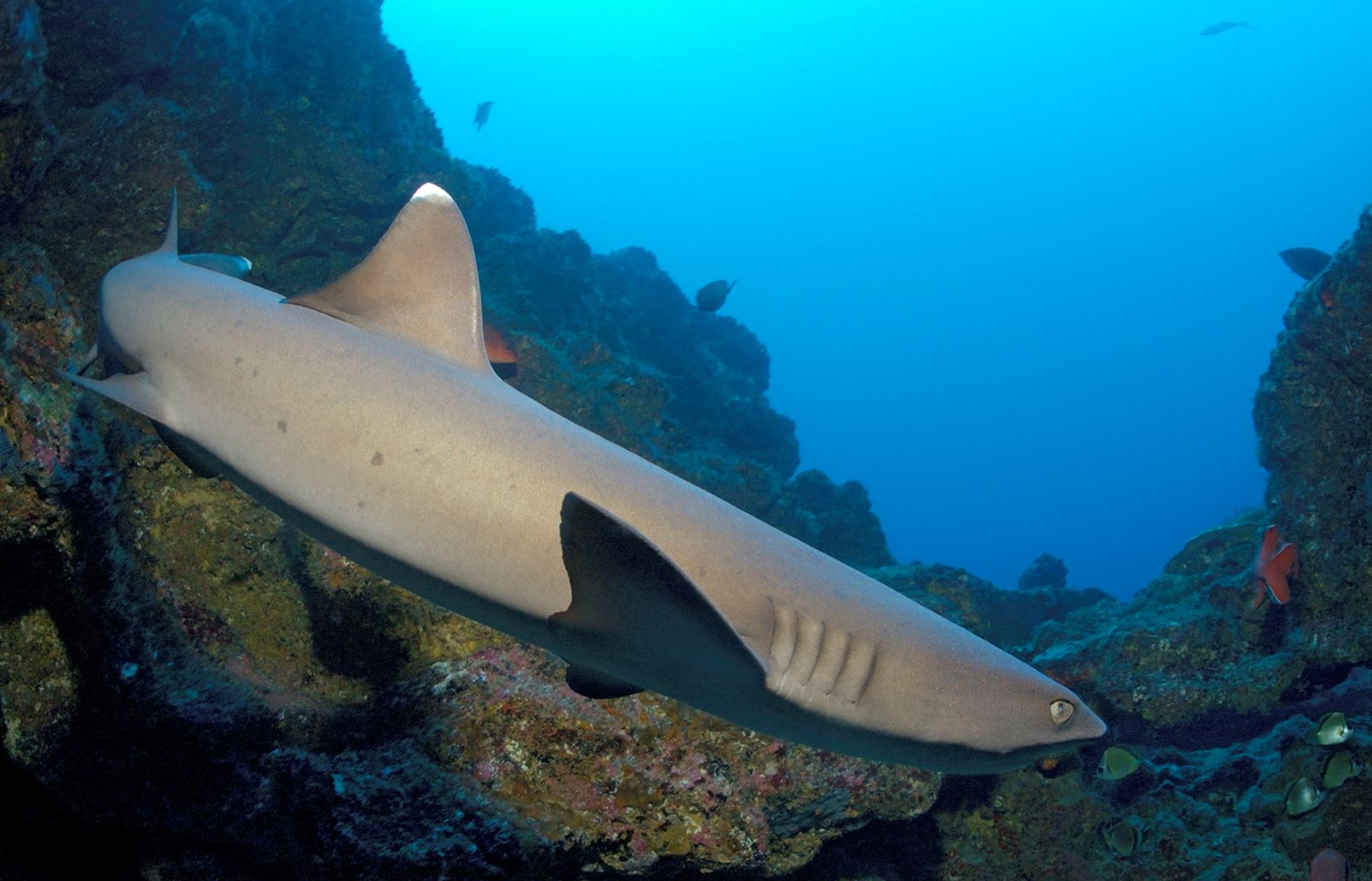Galapagos Fur Seal
The Fur Seal is the second species of sea lion, that can be found in the archipelago. Such species is more nocturnal and less social when compared to the sea lion. However, their wildness, impressive vision and swimming skills make them very interesting to watch and no one can deny that they are very adorable and extremely cute to watch, also they are the fluffiest species.
The fur seal is smaller than the sea lion, about 1,5m (5 ft) and is very shy and rare to see. They prefer the rocks rather than the beaches and they have nocturnal habits.
Fur seals are less in numbers when compared to the sea lion, as they were heavily hunted back in the day by the first colonizers,.and sailors in the 19th century.
The fur seal spend more time in land than they do in water.
Fur seals are usually found in the west side of the archipelago, where the quantity of food is almost always higher. They feed mostly on cephalopods and small fish. As they hunt mainly at night, they have developed accurate techniques and tools such as their whiskers, which can be used to track the waves the fish make on the dark water.
The fur seal females are very territorial, claiming an area for breeding. This species unfortunately has a low rate of reproduction, they breed one pup a year. Females typically go hunting for about 1 day and return to feed the pup. The fur seal pup recognizes their mother by calls and noises, only known to them.
Fur seals can be found by the rocks, resting in small groups or by themselves around the islets. They mainly like places where they can sleep between rocks or dark hidden areas.
- Animal Group: Mammals
- Scientific Name: Arctophoca galapagoensis
- Animal Average Size: 120 - 150 cm
- Animal Average Weight: 22 - 34 kg
Places where you may see this animal:
Genovesa
Santiago
Rabida
Pictures
Islands where you can see the animal with a little luck:
Santiago
It has the biggest and longest lava flow, which is located in Sullivan Bay. Geologically speaking, this island is one of the most beautiful and unbelievable formations. The vast basaltic landscape performs smooth and unbroken surfaces with undulations and nods formed by the fluid lava that created the sculpture. It is located on the central west of the archipelago and is formed by two overlapping volcanoes. It is the 4th biggest of the archipelago.
It is an unpopulated island.
In Puerto Egas explore deep pools and caves carved from the lava shoreline, home to playful Galapagos fur seals as well as a variety of resident and migrant bird species.
Sombrero Chino offers a spectacular snorkel, swimming by a channel of shallow water, nursery of thousands of marine species and a small colony of penguins. Something to notice today in this island is the absence of the thousands of land iguanas that Charles Darwin mentioned on his diary. They completely disappeared due to the presence of introduced species; especially goats and rodents that today, are gone. This is the biggest island on earth where introduced animals were eradicated. Tortoises have the chance now to repopulate the island, and they can be seen more and more often in our visits.
Charles Darwin Journey on Santiago: This is the island where Darwin stayed the longest, he knew already that the islands were something bigger and more important than they seemed when he first arrived, so on his visit, he expend 2 weeks and walked the whole island. Here he first noticed the difference in between the tortoises from different islands, which had different shapes and sizes.
This is an amazing location featuring the remains of an eroded shoreline that is home to seabirds, fur seals, and playful sea lions. Its different shapes have been made throughout and erosion process of the salty waves and wind. Espumilla beach is a white-sandy front located in James Bay very popular among visitors.
Espumilla is a typical Ecuadorian dessert made of fruit and eggs which consistency is very similar to a foamy dessert which can also describe the foamy waves of this site. There are mangroves and a small palo santo forest that lead to salty lagoons that are home to wading birds such as flamingoes.
In the upper dunes, marine turtles nest can be also observed. The clear waters are a great place to snorkel to see assorted fish and rays.
Activities: 1 hour hike / 45 min beach snorkeling
Highlights: Volcanic black beach and wonderful landscapes, fur seal grottos, sea lion colonies, herons, hawks, oystercatchers, finches, doves, white-tipped sharks, sea turtles. We will be able to see the vegetation from arid to humid climate zones, but they have been seriously affected by intensive foraging by introduced goats, now eradicated. The surrounding area is a prime place for spotting and observing hunting herons-namely Great Blue Herons, Yellow-crowned Night Herons, and Lava Herons- as well as oystercatchers. Visitors will enjoy the sight of marine iguanas grazing upon algae beds at low tide, sharing space with the crimps on red Sally light-foot crabs and other wading birds.Visitor sites: Albany islet, Buccaneer Cove, Chinese Hat, Cousin Rock, Egas Port, Espumilla Beach, James Bay, Salt mine Volcano, Sullivan Bay
Genovesa
Genovesa Island (Spanish: Isla Genovesa), named after the Italian city of Genoa, in honor of Christopher Columbus, (referred to in English as Tower Island) is a shield volcano in the Galapagos Islands in the eastern Pacific Ocean. The island occupies about 14 square kilometres (5 sq mi), and its maximum elevation is 64 m (210 ft). The horse-shoe shaped island has a volcanic caldera whose wall has collapsed, forming the Great Darwin Bay, surrounded by cliffs. Lake Arcturus, filled with salt water, lies in the centre, and sediment within this crater lake is less than 6,000 years old. Although no historical eruptions are known from Genovesa, there are very young lava flows on the flanks of the volcano. Genovesa is one of the most precious islands to visit in a Galapagos cruise! Genovesa is also known as the “Bird Island“, and it most certainly lives up to certain standard in a spectacular way. Passenger will have the opportunity to enjoy the most representative birds of Galapagos as: Puffball–chicks, white both yellow–crowned and lava herons, Red footed boobies contrasting with the Nazca booby and also the Sawllow–tailed gulls, the only nocturnal gulls in the world that will be nesting at the cliff’s edge.
Visitors sites: Darwin Bay, Prince Philp´s Steps
Rábida
The red island: Result of the oxidation on the moment of its formation this island offers red landscapes with small craters, cliffs and a red beach. Here, hundreds of sea lions formed a settlement together with a nesting colony of pelicans. Flamingos in the back inhabit a small salty lagoon. Rabida is an unpopulated island.
A red sand beach with a large sea lion colony, Palo Santo forests, endemic cacti, and the only Galapagos site where the nine Dawin’s finches are found.
Also known as Jervis Island in English, Rabida is one of the most diverse in terms of volcanic activity as it lies at the very heart of the archipelago’s volcanic origin.
It is an island comprised of lava poured out of scoria cones, which are very rich in iron oxide and magnesium (typical of Galapagos basaltic lava); that when exposed and as it rusts, gives the island its astounding, unearthly reddish color.
Visitor sites
A walk a long the fantastic red beach and snorkeling.
Rabida in itself has an abundance of landscapes and marine life. The trail for visiting the site is somewhat short, requiring about 45 minutes of walking. We can also go around the shoreline in a dinghy to spot fur seals, pelicans, blue-footed boobies and Nazca boobies.
Excellent place for swimming and snorkeling, you could see white tipped sharks, rays and sea lions, and other different species.
- Activities: 1 hour 30 min hike / 1 hour snorkeling / 1 hour dinghy ride
- Highlights: In this deep red beach, surrounded by cliffs and steep slopes of volcanic cinder cones, we will find a noisy colony of sea lions. The island is a birdwatcher’s delight.
Mr. Frobeen can give you precise information about the ships.
Mr. Frobeen will be happy to advise you by phone at +49 (0)7633 9399360 or via email info@frobeen.de
If you want to book, what are the payment methods?
The reservation is gratis as an option.
If you want to make an fixed booking, there is to pay a deposit of 20%.
The remaining payment is due 4 weeks before departure. In individual cases, such as diving cruises, other rules apply. Information on request.
- Your payments are insured against bankruptcy!

